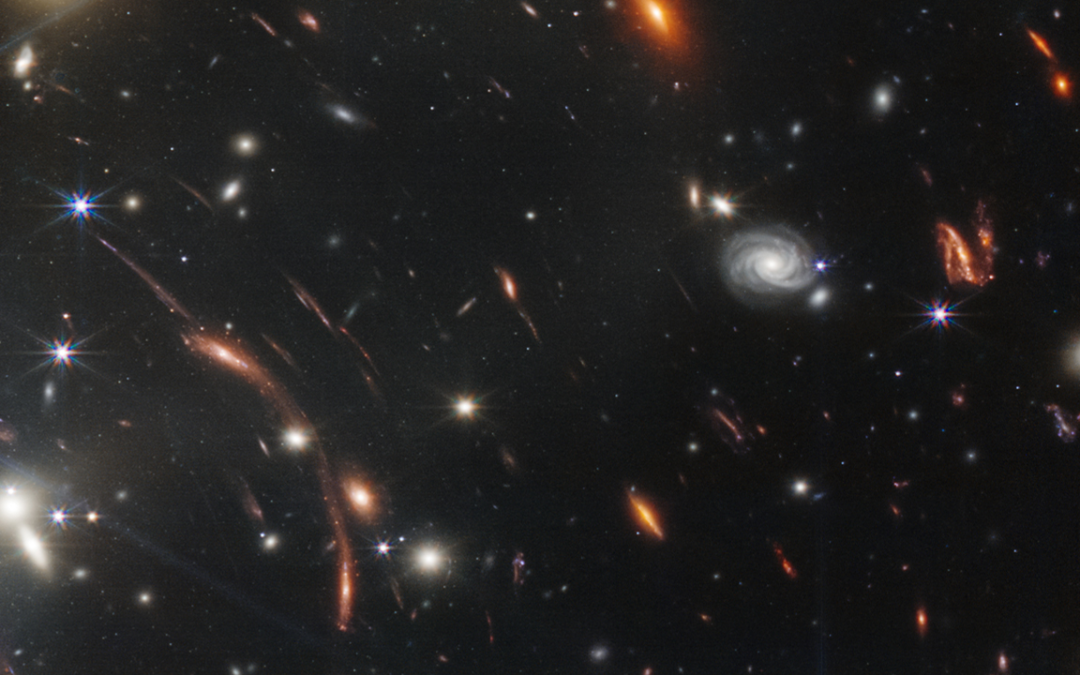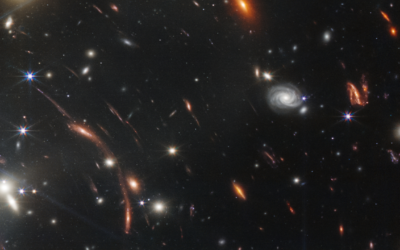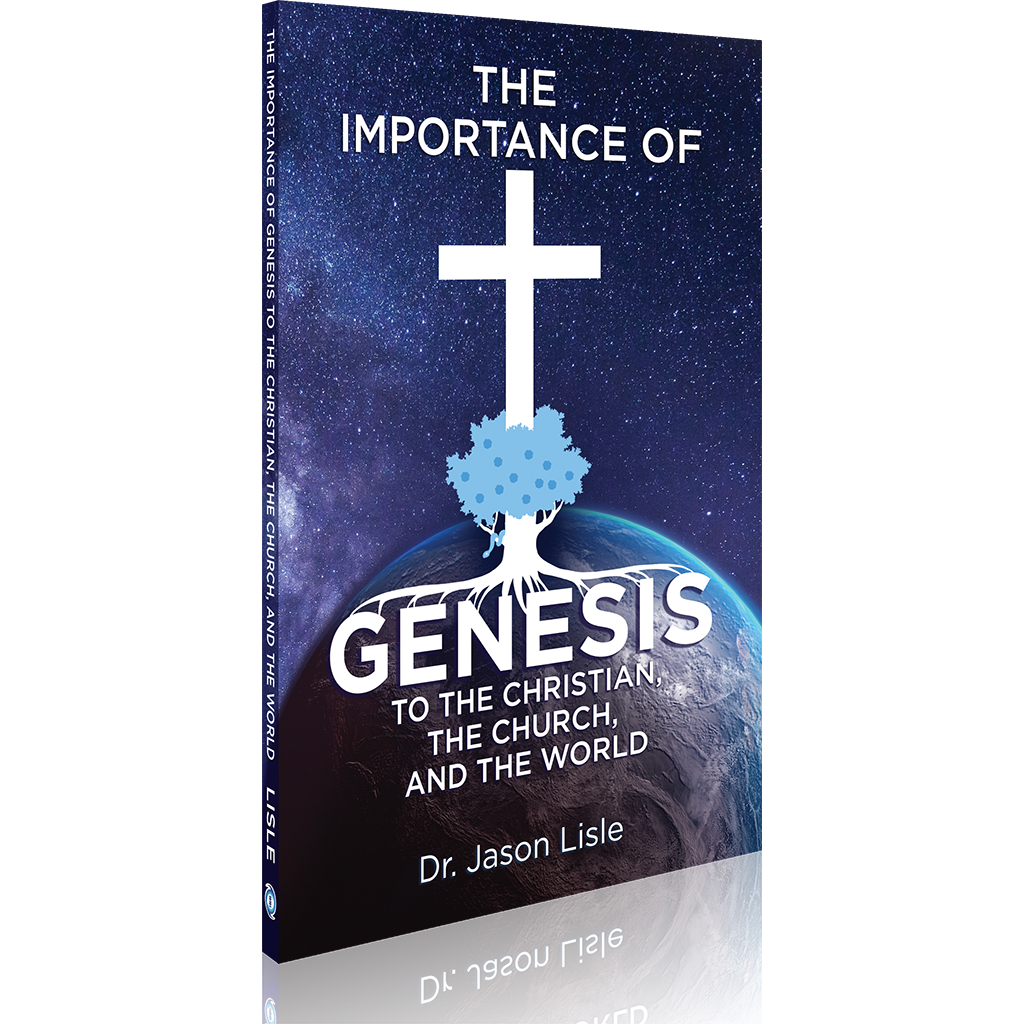
Next YouTube Live Event (Dr. Jason Lisle)
Day(s)
:
Hour(s)
:
Minute(s)
:
Second(s)
Most Recent Articles

Refuting Phillip Dennis’s Errors in Physics, ASC, and Philosophy – Part 3
We have been analyzing the claims of Phillip Dennis and his criticism of the ASC model. In particular, Dennis claims to have refuted the conventionality thesis – Einstein’s claim that the one-way speed of light “is in reality neither a supposition nor a hypothesis about the physical nature of light, but a stipulation which I can make of my own freewill in order to arrive at a definition of simultaneity” [emphasis in original] (Einstein 1916). Conversely, Dennis claims that Einstein is wrong and that the one-way speed of light is necessarily the same as the round-trip speed of light: c = 186,282.397 miles per second in vacuum. However, we have already shown that Dennis’s previous attempts to prove this were fallacious because they begged the question. That is, Dennis had used equations that tacitly assume the one-way speed of light. In his latest article, Dennis claims that the one-way speed of light has been empirically measured in two independent experiments. We will examine the first of these here. We will again show that Dennis has once again begged the question. That is, he unwittingly assumed the one-way speed of light is isotropic in his argument.

Refuting Phillip Dennis’s Errors in Physics, ASC, and Philosophy – Part 2
In this article, we review – at a layman level – the original argument that Phil Dennis made against ASC and my refutation of his claims. This is important for two reasons. First, Dennis’s first article contained a great deal of mathematics, and this required me to reply in kind. Therefore, my goal here is to explain the disagreement between us without using any equations so that the layman may understand the essence of the dispute.
Refuting Phillip Dennis’s Errors in Physics, ASC, and Philosophy – Part 1
This article series will be very important for those interested in the distant starlight issue. Secular astronomers claim that the light from the most distant galaxies has taken billions of years to reach Earth. We can see these galaxies in our most powerful telescopes. Many people conclude from this that the universe must be billions of years old, and therefore that the biblical description of creation is false. But the notion that light takes billions of years to get from distant galaxies to Earth is predicated upon a particular modern convention of how we choose to define the timing of distant events.

The Scopes Monkey Trial Centennial – Part 2
The Scopes trial of 1925 was a pivotal case for the teaching of evolution in public schools. At that time the State of Tennessee did not permit the evolution of man from lower primates to be taught in state-funded schools according to the Butler Act. Many other states had similar laws. The ACLU sought to challenge the validity of this law by offering to defend anyone accused of violating it. John Scopes agreed to be prosecuted. From a legal perspective, the trial was about whether Scopes had violated the Butler Act. But the defense attorney Clarence Darrow wanted to use this trial to discredit Christianity in general and creation in particular. He secured the written testimony of eight experts on the science of evolution. None of these were seen by the jury because the judge ruled that they were irrelevant to the legal issue of the trial. We examined three of these expert testimonies in part 1 and found that their arguments have not aged well. We here examine the testimonies of the remaining five experts.

The Scopes Monkey Trial Centennial – Part 1
July 10, 2025, marked the 100th anniversary of the start of the famous “Scopes Monkey Trial,” in which John Scopes was accused of teaching evolution in violation of the Butler Act. The trial was the inspiration for the heavily fictionized play (and subsequent movies) Inherit the Wind. The Scopes trial was considered a victory for the teaching of evolution in public schools. But what actually happened at this trial? Was the scientific evidence really a powerful refutation of biblical creation? Would it stand up to modern scrutiny?

Metallicity: A Problem for Secular Cosmology
Hydrogen is the most abundant element in the universe. It is the lightest element, consisting of one proton encircled by one electron. About 91% of the atoms in the universe are hydrogen. Helium is the next most abundant. It is the second-lightest element, consisting of two protons and two neutrons in the nucleus, encircled by two electrons. Helium constitutes just under 9% of the atoms in the universe. All the remaining elements combined constitute less than 1%. Astronomers refer to these heavier elements as metals. In astronomy, a metal is any element with an atomic number higher than 2. Note that this is different from the definition used by chemists. In astronomy metals include elements like oxygen, nitrogen, and carbon. Metals pose a serious challenge for advocates of the big bang and secular models of galaxy evolution. But they are a feature and natural expectation of biblical creation.
Denying the Trinity – Part 2
We have been examining the claims of Liam, who denies the Trinity in general and who, in particular, denies that Jesus is God. This ultimately is not an intellectual exercise but a spiritual one. It is only by the power of the Holy Spirit that a person can declare with conviction that Jesus is Yahweh – the Lord. 1 Corinthians 12:3b states, “And no one can say, ‘Jesus is Lord,’ except by the Holy Spirit.” Furthermore, confessing Jesus as Lord is a requirement for salvation (Romans 10:9-13), for there is no Savior besides the one and only Yahweh (Isaiah 43:11). Therefore, if Jesus is not Yahweh, then neither can He be your Savior.
Refuting Phillip Dennis’s Errors in Physics, ASC, and Philosophy – Part 3
We have been analyzing the claims of Phillip Dennis and his criticism of the ASC model. In particular, Dennis claims to have refuted the conventionality thesis – Einstein’s claim that the one-way speed of light “is in reality neither a supposition nor a hypothesis about the physical nature of light, but a stipulation which I can make of my own freewill in order to arrive at a definition of simultaneity” [emphasis in original] (Einstein 1916). Conversely, Dennis claims that Einstein is wrong and that the one-way speed of light is necessarily the same as the round-trip speed of light: c = 186,282.397 miles per second in vacuum. However, we have already shown that Dennis’s previous attempts to prove this were fallacious because they begged the question. That is, Dennis had used equations that tacitly assume the one-way speed of light. In his latest article, Dennis claims that the one-way speed of light has been empirically measured in two independent experiments. We will examine the first of these here. We will again show that Dennis has once again begged the question. That is, he unwittingly assumed the one-way speed of light is isotropic in his argument.
Refuting Phillip Dennis’s Errors in Physics, ASC, and Philosophy – Part 2
In this article, we review – at a layman level – the original argument that Phil Dennis made against ASC and my refutation of his claims. This is important for two reasons. First, Dennis’s first article contained a great deal of mathematics, and this required me to reply in kind. Therefore, my goal here is to explain the disagreement between us without using any equations so that the layman may understand the essence of the dispute.
Refuting Phillip Dennis’s Errors in Physics, ASC, and Philosophy – Part 1
This article series will be very important for those interested in the distant starlight issue. Secular astronomers claim that the light from the most distant galaxies has taken billions of years to reach Earth. We can see these galaxies in our most powerful telescopes. Many people conclude from this that the universe must be billions of years old, and therefore that the biblical description of creation is false. But the notion that light takes billions of years to get from distant galaxies to Earth is predicated upon a particular modern convention of how we choose to define the timing of distant events.
The Scopes Monkey Trial Centennial – Part 2
The Scopes trial of 1925 was a pivotal case for the teaching of evolution in public schools. At that time the State of Tennessee did not permit the evolution of man from lower primates to be taught in state-funded schools according to the Butler Act. Many other states had similar laws. The ACLU sought to challenge the validity of this law by offering to defend anyone accused of violating it. John Scopes agreed to be prosecuted. From a legal perspective, the trial was about whether Scopes had violated the Butler Act. But the defense attorney Clarence Darrow wanted to use this trial to discredit Christianity in general and creation in particular. He secured the written testimony of eight experts on the science of evolution. None of these were seen by the jury because the judge ruled that they were irrelevant to the legal issue of the trial. We examined three of these expert testimonies in part 1 and found that their arguments have not aged well. We here examine the testimonies of the remaining five experts.
The Scopes Monkey Trial Centennial – Part 1
July 10, 2025, marked the 100th anniversary of the start of the famous “Scopes Monkey Trial,” in which John Scopes was accused of teaching evolution in violation of the Butler Act. The trial was the inspiration for the heavily fictionized play (and subsequent movies) Inherit the Wind. The Scopes trial was considered a victory for the teaching of evolution in public schools. But what actually happened at this trial? Was the scientific evidence really a powerful refutation of biblical creation? Would it stand up to modern scrutiny?
Metallicity: A Problem for Secular Cosmology
Hydrogen is the most abundant element in the universe. It is the lightest element, consisting of one proton encircled by one electron. About 91% of the atoms in the universe are hydrogen. Helium is the next most abundant. It is the second-lightest element, consisting of two protons and two neutrons in the nucleus, encircled by two electrons. Helium constitutes just under 9% of the atoms in the universe. All the remaining elements combined constitute less than 1%. Astronomers refer to these heavier elements as metals. In astronomy, a metal is any element with an atomic number higher than 2. Note that this is different from the definition used by chemists. In astronomy metals include elements like oxygen, nitrogen, and carbon. Metals pose a serious challenge for advocates of the big bang and secular models of galaxy evolution. But they are a feature and natural expectation of biblical creation.
Denying the Trinity – Part 2
We have been examining the claims of Liam, who denies the Trinity in general and who, in particular, denies that Jesus is God. This ultimately is not an intellectual exercise but a spiritual one. It is only by the power of the Holy Spirit that a person can declare with conviction that Jesus is Yahweh – the Lord. 1 Corinthians 12:3b states, “And no one can say, ‘Jesus is Lord,’ except by the Holy Spirit.” Furthermore, confessing Jesus as Lord is a requirement for salvation (Romans 10:9-13), for there is no Savior besides the one and only Yahweh (Isaiah 43:11). Therefore, if Jesus is not Yahweh, then neither can He be your Savior.
New Resource!
Forum
Ask questions in the online forum and have them answered by Dr. Jason Lisle and other Ph.D. scientists.
Partner
Article Archives
Live Events
November 9, Joshua Springs, CA
Calvary Chapel Joshua Springs
9:00 a.m. The Importance of Genesis
11:00 a.m. The Importance of Genesis
6:00 p.m. Science Confirms Biblical Creation
November 12, Rialto, CA
Calvary Chapel Rialto
7:00 p.m. Science Confirms Biblical Creation
8:15 p.m. Q&A
November 13, Pasadena, CA
Calvary Chapel Pasadena
7:00 p.m. The Importance of Genesis
November 16, Montclair, CA
Calvary Chapel Montclair
9:30 a.m. The Importance of Genesis
November 29, Middlesex, NJ
Calvary Chapel Middlesex
6:00 p.m. His Star
November 30, Colts Neck, NJ
Colts Neck Community Church
25 Merchants Way
8:30 a.m. The Importance of Genesis
10:30 a.m. The Importance of Genesis
6: 00 p.m. Dinosaurs and the Bible
7:00 p.m. His Star
December 1, Colts Neck, NJ
Colts Neck Community Church
6:00 p.m. Worlds of Creation
7:00 p.m. Logic & the Christian Faith
December 3, South Jersey, NJ
Calvary Chapel South Jersey
6:30 p.m. His Star
December 7, Chadds Ford, PA
Calvary Chapel Delaware County
500 Brandywine Dr.
December 14, Fort Collins, CO
Calvary Chapel Fort Collins
Subscribe to Newsletter







